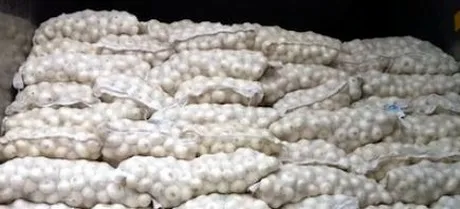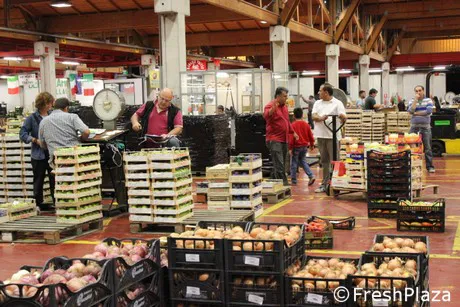
White onions from India (archive photo).
But let us try to understand the situation - Italian white onion stocks ended a few weeks ago, as did the European ones. Those looking for this type of product must therefore contact importers.
At the moment, we are talking about Indian onions. The first shipments arrived in mid-March, more or less in line with the start of the 2015 season. The problem, though, is volumes are very scarce.
As soon as a container arrives, the produce sells out in 24 hours. In a market where big grades used to be the favourite, small ones will do just as well. Supply is not enough to meet demand and prices reach 75/80 cents per kg in 10 or 25 kg sacks.
But why are there so little Indian volumes? Traders have two explanations for it. First of all, Indian producers do not want any problems. Indian onions usually become available in late March, while the last volumes of Italian produce are still available. This in turn means that the imported produce, which is more expensive, does not sell, as happened in 2015.
Secondly, volumes may be lower due to season trends or less volumes may have been destined to exports towards Italy.
The second hypothesis is the most popular, especially since Italian stocks did not end all at once and importers knew there was going to be a strong demand for Indian onions.

Onion trading at Caab, the Bologna wholesale market. (Archive photo)
This situation is expected to last a while longer because, after the Indian produce, it will be the turn of Australian onions. The season will start around 15-20 April, but operators already know volumes are lower than in the past. In addition, the produce that will arrive has already been sold as part of supply programmes.
After then, it will be the turn of white onions from Mexico and Argentina, though the latter are usually affected by phytosanitary problems. Imports will have to last until the new Italian season - early varieties are expected for late May. There are still two months to go and it will be impossible to meet all demands unless people start buying golden onions.
The golden onion situation is not very different, though not as extreme. Demand is high and supply is limited with high prices. The Italian produce ended a while ago and produce now comes from Austria (38 cents per kg), the Netherlands and France, with prices that exceed 30 cents per kg - 30/32 cents per kg for good-quality Dutch produce and 32 cents per kg for the French product. One week ago, prices were lower at 29 cents per kg.
